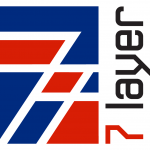7 Layer: Big Data Solution for Banks
Comment: The interview with Phil that is appearing in SPECIMEN, CCL Secure’s high quality industry publication and was distributed at the Currency Conference in May.
“Big Data” is a buzzword that has had a lot of airplay in the last 12 months. CCL Secure’s PolyTeQ Services has been working with 7 Layer Solutions in the application of Big Data to the banknote industry. Phil Ball, Technical Director of 7 Layer, explains what Big Data is and how it can benefit a central bank.
What is Big Data and why it is such a hot topic?
Big Data is usually described as “extremely large data sets that are stored digitally and can be collected and analysed in real time.” Computing power has increased in the last decade and the cost of storing data has reduced dramatically. As a result, data is now commercially viable in a way it was not before. This has unleashed an explosion of applications, including in the world of banknotes.
What has 7 Layer Solutions done in this space?
After identifying the huge potential in the area of Big Data for the cash logistics industry, 7 Layer Solutions was awarded a British Government grant to study Big Data analytics in the banknote machine space. As a result of extensive research by a PhD quantitative data graduate, we have developed a dedicated cash analysis product called NoteChain (more information is available at www.7layer.net).
How does Big Data fit into currency management?
Every sensor and detector device that reads a banknote serial number creates data that is useful to an issuing department. When you link a serial number to information collected by the fitness and authentication detectors, you get a snapshot of that banknote. If you see that same banknote two or three times a year, you can start to track trends and understand the life of banknotes more accurately.
What are the key advantages of collecting data in the cash cycle?
Ultimately it comes down to being able to make decisions based on hard quantitative facts, as opposed to assumptions or past experiences. The two obvious benefits from tracking your banknotes by their serial numbers are policy benefits, and demand and supply benefits.
The policy benefits are that you can set specifications accurately, based on knowing why notes fail and how well different security features last in circulation. You can manage the quality of your substrate and print suppliers, assessing whether all suppliers are equal or if each delivery is equal. Finally, if you have an outsourced clean note policy, you can understand how your third-party note processors, such as commercial banks and cash-in-transit companies, are performing. You can rethink your “notes held to order” schemes to manage their behaviours and performance.
The demand and supply benefits start with being able to match stocks to demand. Central banks will always need a stock of banknotes for the unexpected. More accurate matching of demand and supply allows lower stocks to be held. Secondly, the ability to be sure that you have the right number of banknotes in the right place at the right time increases. Because banknote demand fluctuates by climate, geography and society, this is not as easy as it sounds. The supply chain is usually kept overstocked, just in case. Knowing what stocks you have, and whether they are 25% or 90% through their note lives, increases the chance of having appropriate stocks in place.
This sounds useful, but how hard is it to do?
Not as hard as you may think. You do need to answer some key questions at the start. Assuming the answers are positive, then you could be getting data within three to six months, depending on how many banknote sorting machines you are going to collect data from.
What are some of those key questions?
Are the serial numbers on your current banknotes capable of being read by machines? Do you have serial number reading on your sorters? If you do, but they are not enabled, then you need to talk to your supplier. If you don’t have serial number reading, you will need to establish the cost of upgrading your sorter with your supplier.
You might assume that, having bought a sorter, you own the data. This may not be the case. Check that your contract with your machine supplier gives you free and full access to your own data.
Ask your banknote printer to supply you with a full data set from the detectors in their single-note inspection machines. The data should be linked to the serial numbers for each making.
But surely that is just the start?
Yes, the next stage is actually the most important. And this is where we have found our collaboration with PolyTeQ invaluable. In order to prepare a proper cost–benefit analysis for our NoteChain™ software, we need the customer — the central bank — to define the questions they want answered. We bring extensive knowledge of writing vault management and cash-handling software for Central Banks and the cash-handling industry, but PolyTeQ’s central bank consulting expertise helps make this project successful.
Finally, we need to map the data from the sorting machines to prepare a database to download the data into. We also need to understand and assess the server and data security needs. Armed with that information, we can prepare an accurate cost–benefit analysis for each customer.
What happens next?
The implementation phase. This takes less than six months, because NoteChain™ is an off-the-shelf software package that is straightforward to implement. As long as the preparation has been done well, implementation is seldom a problem.
How often does the cost–benefit not add up?
Central banks who are currently active in this area include the Reserve Bank of Australia, the Bank of Canada, De Nederlandsche Bank and the Bank of Mexico. Each bank has its own particular reasons and circumstances, but they are all clear on the benefits.
Our experience is that the benefits are clear and credible. When we start talking to central banks, the challenge is usually slowing down their thinking about what is possible, as the benefits are so compelling!
Is the implementation process an expensive undertaking?
If you do not already have serial number reading enabled on your sorters, this can be a significant one-off cost. The data storage costs and the cost of getting the data into the software are trivial — a few thousand dollars per server. The project costs and ongoing software licencing costs are small, compared to doing this work in-house. The long-term cost savings associated with buying, storing and managing banknotes and gaining control of note cleanliness are very significant.
How has 7 Layer Solutions worked with central banks to make this concept a reality?
We have talked to leading central banks about the work they are doing to understand what questions they have about banknote lifespan and how Big Data can be used to answer them. These discussions have led to a trial with a national central bank, using real data to explore the value it offers. We are currently talking to a number of central banks about implementing our software. All these discussions allow us to update NoteChain™ to fully serve the needs of central banks.
I’d just like to add that we are very much enjoying the work we are doing with PolyTeQ. They have been useful and helpful.
About the company
7 Layer Solutions is a specialist software company based in England with close to 20 years’ experience in providing robust and innovative solutions to the cash logistics industry. Its Vault Management Software product is the largest in the world.


Comments are closed.